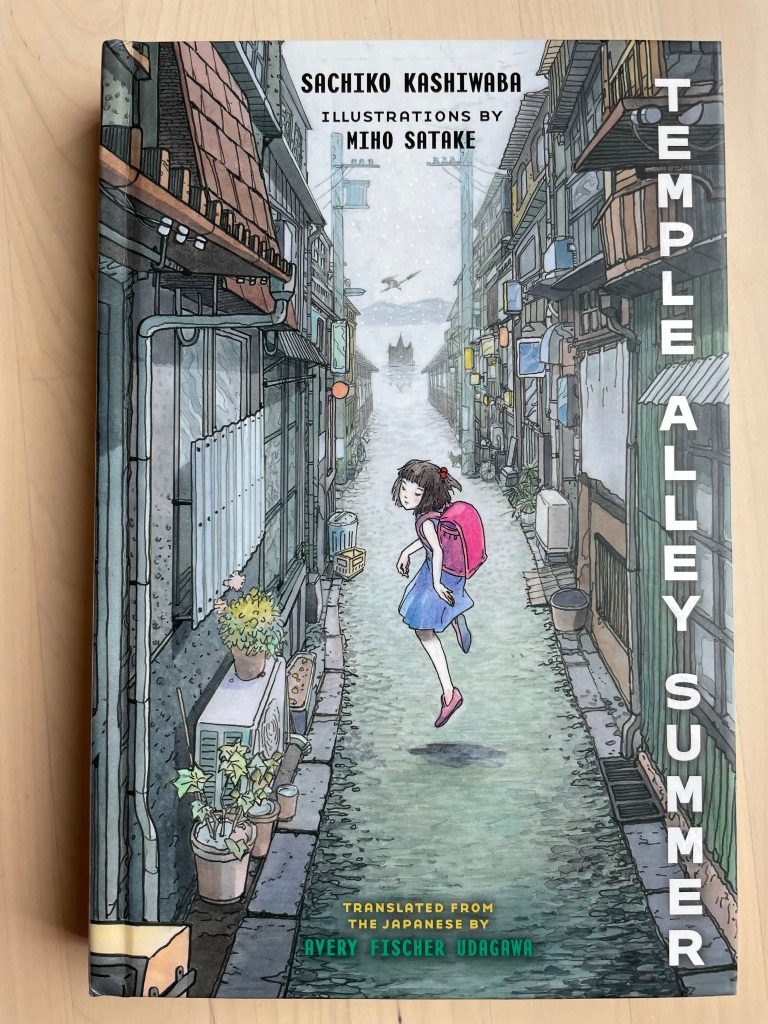By Ben & Maureen, 7 November 2021

When the children were younger, they’d play a game using Google Translate to translate a piece of text from say, English to Chinese, and then translate the resulting Chinese text back into English again. The ultimate translation was usually so different from the original version that it would illicit hoots of laughter and we’d shake our heads at the limitations of Google Translate. I’m reminded of these limitations whenever I read a translated work of literature where I have working knowledge of the original language in which it was written, like Sachiko Kashiwaba’s Temple Alley Summer, a middle-grade, fantasy-mystery novel that I recently shared with my non-Japanese speaking son. Even though I have never set eyes on the original, as we read the English version, I could imagine hearing the words of the original work, like lilting musical notes in the background. The feel, the “imi” (meaning) of the work, was distinctly Japanese, and I attribute this accomplishment to the masterful translation by Avery Fischer Udagawa, who is no stranger to Kashiwaba’s writings. Thanks to her, my 11-year-old is also no longer a stranger to Kashiwaba’s imaginative stories either.
M: We read Temple Alley Summer together right? What did you think of it? Proper answer now.
B: It was good, and the story idea was smart. The concept was cool. Is that proper enough?
M: Yes. But now I need a synopsis from you.
B: What’s a synopsis? Is it a sickness?
M: Err, no. It’s a short summary of the story. But like always, we don’t want any spoilers, OK? So, tell me what Temple Alley Summer is about.
B: [Pause, thinking] It’s about a boy called Kazuhiro, or Kazu, and he finds out that his house is a temple and if you pray to this statuette, it can bring people back to life.
M: So does someone come back to life?
B: Yes, there’s a girl called Akari, like Akita the dog, but different, and she ends up in Kazu’s class at school. Everyone, even Kazu’s mom, seems to know Akari from years ago, but Kazu doesn’t.
M: It’s weird that Kazu seems to have memory lapse when it comes to Akari, doesn’t it? What happens then?
B: Well, Kazu tries to figure out who Akari is and how she came back to life. He does his summer project about Kimyō Temple Alley, which is the old name of the street, and “Kimyō” means “to come back to life”, so he suspects thats how Akari came back to life, and he goes to talk to a lot of old people to find out more information,
M: So he interrogates the elderly about the past, about the history of his house and where he lives, right?
B: Yes, but it takes him some time to figure it all out. No one is very straightforward in this story.
M: Hmmm. Who’s your favourite character in the book then?
B: [Pause, thinking] I don’t have a favourite character actually. But it did make me think about ghosts and Halloween and trick or treating!
M: I’ll let you have a piece of candy from your Halloween stash if you tell me if you’d recommend the book to someone and why.
B: Umm, I’d recommend the book to someone because it’s an interesting story. I also learnt about Japanese culture, like the Obon festival and radio exercises in the morning and that shrine thing in Japanese houses. And that Japanese kids like those fried noodles, like I do.
M: You mean yakisoba? Yes, that’s yummy. Fine, you’ve earned your candy.
B: Yessssss!
For ages 10 and up.

「Stories That Stay With Us 」在 2021年11月7日週日,10:00 寫道:
> Maureen Tai posted: ” By Ben & Maureen, 7 November 2021 When the children > were younger, they’d play a game using Google Translate to translate a > piece of text from say, English to Chinese, and then translate the > resulting Chinese text back into English again. The u” >
LikeLike